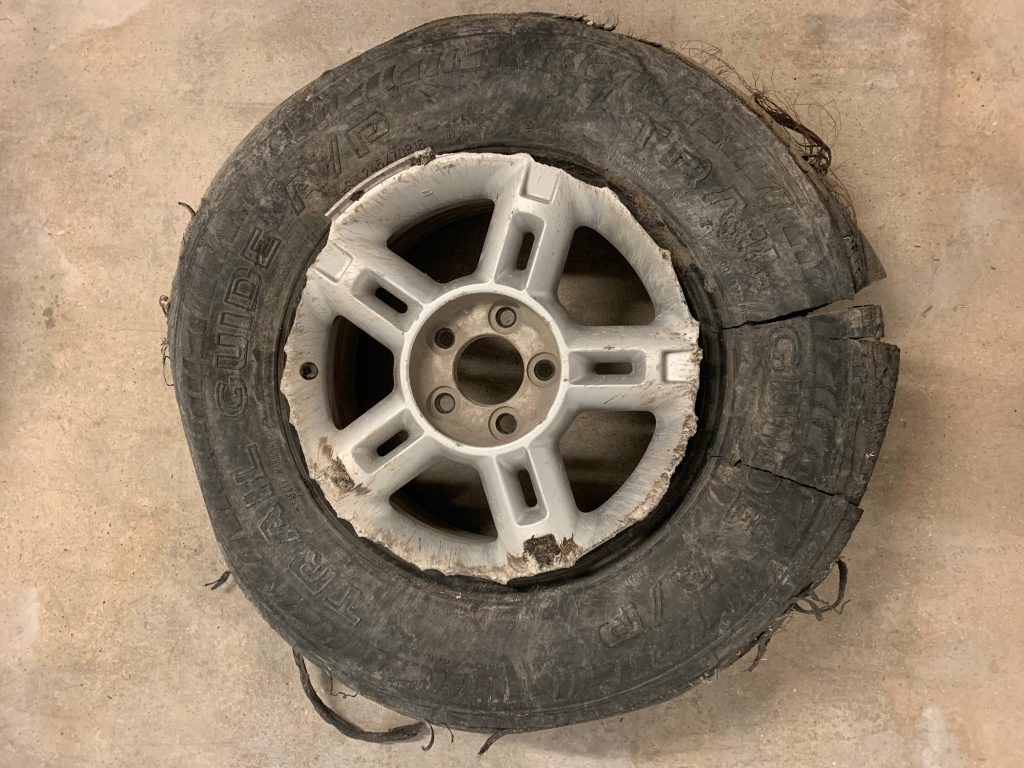Tire Tread Defect Lawyers Helping Victims Nationwide and Across Texas including Houston, Dallas, and San Antonio
Were you involved in a serious car accident due to a tire failure? Many tires are designed to withstand speed, temperatures, specific types of road surfaces, and more. However, failure to meet specific standards can result in tires that shred easily, are susceptible to blow-outs, or can result in tread separation. Manufacturers are required by the National Highway Traffic Safety Administration (NHTSA) to adhere to regulations known as the Federal Motor Vehicle Safety Standards (FMVSS). Failing to design a product that meets these requirements can result in serious injury or death, leaving the manufacturer liable.
The team of attorneys at Leger Ketchum & Cohoon, PLLC work with a network of industry experts and are not afraid to pursue cases against big corporations. If you sustained injuries caused by a tire tread defect, contact us for a free initial consultation. We will fight for the compensation you deserve.
Different Types of Tire Defects
- Tread Separation. Tread separation occurs when the belts underneath a tire’s tread come apart. This causes the tread to come off the rest of the tire, which can be extremely dangerous when travelling at a high rate of speed. A driver has a very high chance of losing control of the vehicle. Insufficient tire bonding and other manufacturer defects frequently are the cause of tread separation.
- Tire Blowout. Although less common these days, tire blowouts do still readily occur. They can be caused by things such as too little air pressure, extreme heat, impact damage, or overloading.
- Zipper Failure. This refers to the explosion of a tire’s sidewall and typically occurs during inflation of a tire, often injuring those in close proximity. The term “zipper” is used because of the appearance of the sidewall after the explosion.
- Bead Fracture. Along a tire’s inner edges are steel beads coated with rubber. A bead on a tire may become stuck on the rim as the tire is mounted. The high stress exerted on the bead can cause the bead to fracture, resulting in a low-pressure explosion.
- Multi-Piece Wheel Explosions. Multi-piece wheels are two or three piece assemblies which require tube type tires. These types of wheels utilize a split ring to secure the tire to the rim, relying on the tire’s pressure to hold them together. This translates to potential danger during inflation, mounting, repair, and vehicular motion.
What to Do if a Tire Tread Defect Caused Your Crash
- Preserve the car. Do not let the insurance company take the car and destroy it. If your vehicle was already towed from the scene, find out where it is and tell the facility or yard that is holding it not to destroy it.
- Send a survey team to the scene. A survey team will document the location of the vehicle, tire tread, and other essential elements of the crash. A clear picture of the scene helps establish how the crash happened.
- Preserve the tread. The tire tread itself is vital evidence, so be sure to preserve it.
- Be aware of time limits. The statute of limitations establishes how long after the incident you can file a claim. And the statute of repose establishes how long after the tires were made that you can file a claim. Be aware of both time limits, which vary depending on your state.
Contact Our Tire Tread Defect Attorneys Serving Across Texas and Nationwide
If you or a loved one has been injured as a result of a tire tread defect, contact Leger Ketchum & Cohoon, PLLC to obtain more information about pursuing your legal rights. You can reach us by phone at 832.764.7200, email at info@lkclawfirm.com, or by our online contact form.













